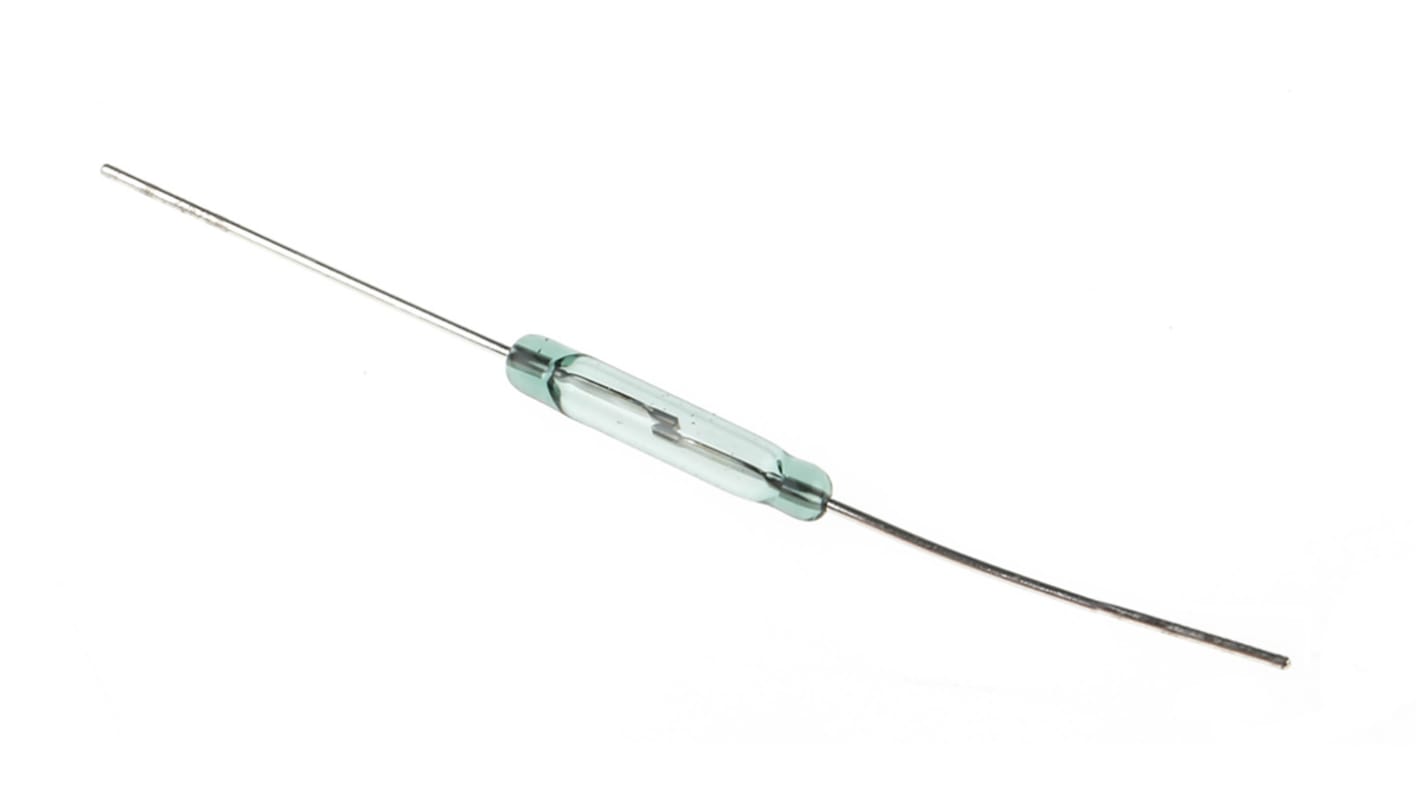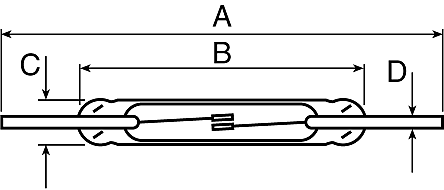Sensata Cynergy3 SPST Reed Switch, 100mA 24V ac/dc
- RS Stock No.:
- 229-3664
- Distrelec Article No.:
- 137-48-100
- Mfr. Part No.:
- TRA211G/15-20
- Brand:
- Sensata / Cynergy3

Bulk discount available
Subtotal (1 unit)*
£6.59
(exc. VAT)
£7.91
(inc. VAT)
FREE delivery for orders over £50.00
Limited stock
- 81 left, ready to ship
- Plus 444 left, ready to ship from another location
Need more? Click ‘Check delivery dates’ to find extra stock and lead times.
Units | Per unit |
|---|---|
| 1 - 19 | £6.59 |
| 20 - 99 | £6.26 |
| 100 - 249 | £6.06 |
| 250 - 499 | £5.54 |
| 500 + | £4.95 |
*price indicative
- RS Stock No.:
- 229-3664
- Distrelec Article No.:
- 137-48-100
- Mfr. Part No.:
- TRA211G/15-20
- Brand:
- Sensata / Cynergy3
Specifications
Technical Reference
Legislation and Compliance
Product Details
Find similar products by selecting one or more attributes.
Select all | Attribute | Value |
|---|---|---|
| Brand | Sensata / Cynergy3 | |
| Contact Configuration | SPST | |
| Maximum Switching Current | 100mA | |
| Maximum Switching Power | 1W | |
| Maximum Switching Voltage | 24V ac/dc | |
| Contact Resistance | 150mΩ | |
| Contact Material | Rhodium | |
| Maximum Release Time | 0.05ms | |
| Operating Time Including Bounce | 0.6ms | |
| Width | 2.6mm | |
| Length | 55mm | |
| Depth | 2.6mm | |
| Dimensions | 55 x 2.6 x 2.6mm | |
Select all | ||
|---|---|---|
Brand Sensata / Cynergy3 | ||
Contact Configuration SPST | ||
Maximum Switching Current 100mA | ||
Maximum Switching Power 1W | ||
Maximum Switching Voltage 24V ac/dc | ||
Contact Resistance 150mΩ | ||
Contact Material Rhodium | ||
Maximum Release Time 0.05ms | ||
Operating Time Including Bounce 0.6ms | ||
Width 2.6mm | ||
Length 55mm | ||
Depth 2.6mm | ||
Dimensions 55 x 2.6 x 2.6mm | ||
- COO (Country of Origin):
- CN

Sensata Cynergy3 Reed Switch, Rhodium Contacts, 0.6ms Operating Time - TRA211G/15-20
Use this reed switch from Sensata Cynergy3 to control the flow of current in an electrical circuit. Its rhodium contacts help to ensure minimal signal loss for quick and reliable switching. You can depend on its durability in harsh industrial environments, as it has a wide operating temperature range of -40°C to +150°C. Its compact length of 36mm makes it a good choice for use with DIP components, such as the location sensors and proximity switches found on automatic doors and tamper-proofing systems.
Features & Benefits
• Non-contact actuation helps to minimise wear for a longer service life
• Hermetically sealed design means there's no risk of sparking on actuation, making it safe for use in harsh environments
• Hermetically sealed design means there's no risk of sparking on actuation, making it safe for use in harsh environments
What's the switching voltage of this device?
This component has a switching voltage of 24V AC/DC, making it a good choice for use in low-power applications.
What factors could affect the sensitivity of this switch?
Among the most common factors affecting the sensitivity of a reed switch are its position and the orientation of its magnet.
